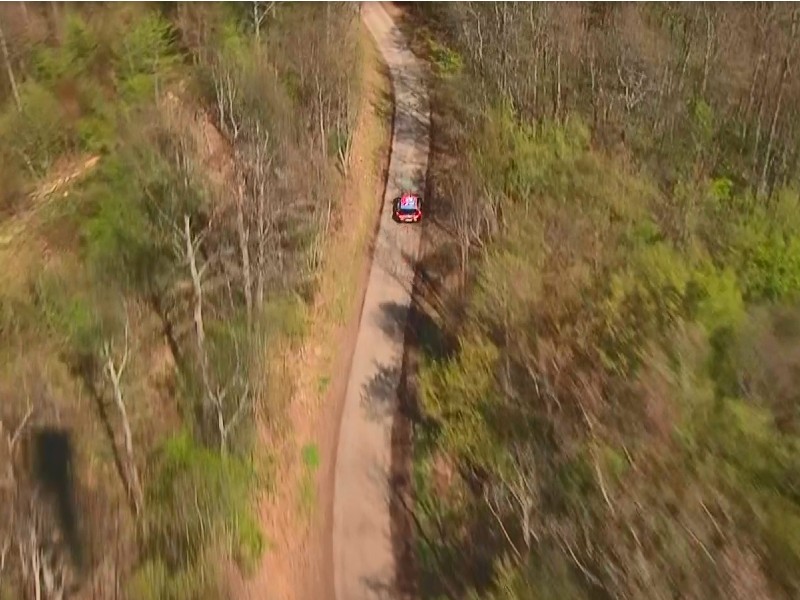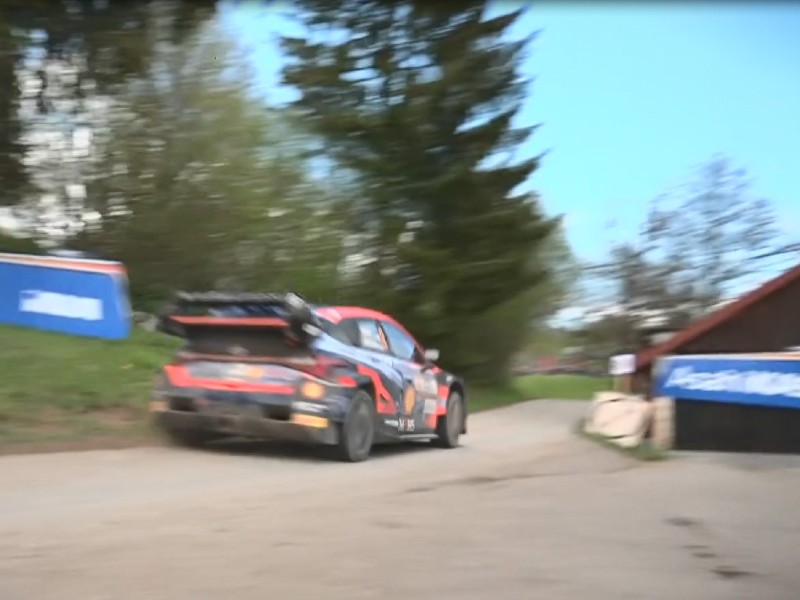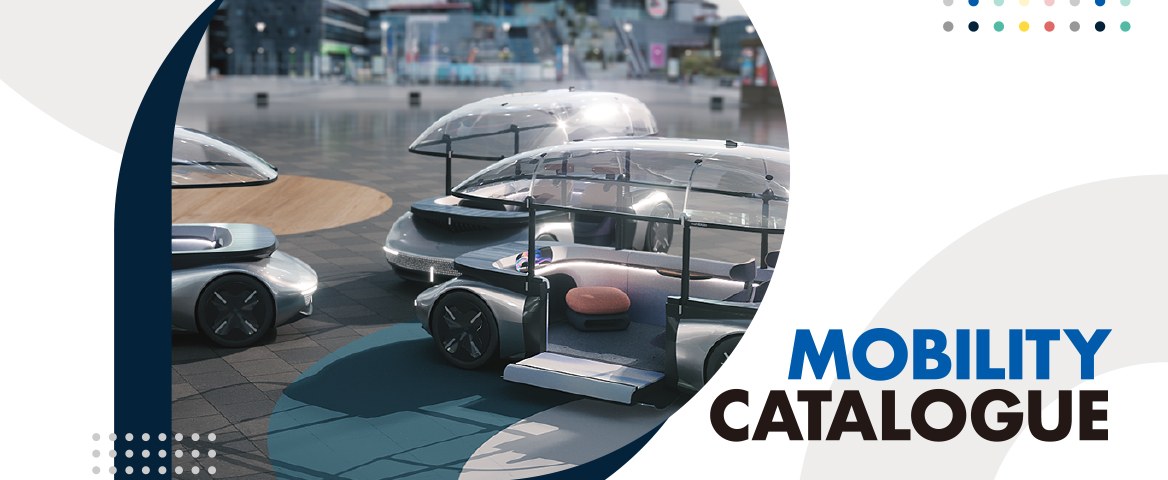Croatia Rally is a tarmac event with almost half a century of history since it was first held in 1974.
The event cannot be simply described as a tarmac rally as it has various characteristics, with asphalt and concrete stages, varying grip-levels with some slippery surfaces, and fast and slow roads. Furthermore, unless there are firm verges or guardrails, stages can become muddied by cars cutting corners, especially when a verge is level with the road surface.
The weather is also another factor. If it is sunny, one only needs to think of a balance between tyre wear and grip, but if it rains or turns out to be both wet and dry, tyre choice can be tricky; whether to select rain tyres, intermediate tyres with a less dense tread pattern, or soft compound dry tyres. Compared with gravel events, tarmac rally results are more seriously impacted by tyre choice.

As such, various elements shape the characteristics of each tarmac event. But in the case of this Croatia Rally, its character cannot be described so simply. The stage is a combination of slow and fast roads, rough and smooth sections, and high-grip or extremely slippery surfaces. Coupled with unpredictable rainfall, choosing the most suitable tyre is close to impossible. For this reason, when Croatia Rally was added to the WRC calendar for the first time last year, various dramas unfolded from Day 1.
However, there is a connection between the starting order and times that the drivers post. Should one start first, the surface is clean, but if one is at the back of the pack, it can be more like a gravel rally.
The Toyota driver Rovanperä took advantage of his starting position and fared well on a rainy Day 1, delivering a string of fast times. Although he crashed out of the event at the beginning of the rally last year, he took the lead starting 1st, and setting the fastest time in 6 out of the 8 stages on Day 1.

The Hyundai driver Neuville was also in a good position, driving 2nd on the road, but he dropped back largely due to a problem with the electrical system and a time penalty imposed for speeding infringements over a road section.
However, we should not judge Rovanperä only from the first day’s result. At the back of the running order, the road surface was covered with mud in some places, and it turned out to be far more disadvantageous than it had been expected before the rally started.
And a completely different drama unfolded on Day 2. Starting in reverse order of the standings of Day 1, the car that came in last place among the works teams started first on Day 2. Therefore, Rovanperä was 10th in the running order, and he dropped his pace greatly just as feared, and he even struggled to remain in a top-five position. Furthermore, Rovanperä lost one minute due to a puncture and Hyundai’s Tänak trimmed the gap to the Finn at every stage. What was fortunate for Rovanperä was the cancellation of SS15 in the second loop on Day 2 due to thick fog. This prevented Tänak from further closing in on Rovanperä, and the Finn managed to remain at the top.
There were no particular highlights in terms of times recorded by Rovanperä. However, what shone was his ability to defend the lead despite narrowing the time margin with a rival, under conditions where he could not push, and a single mistake could have led to retirement. At the end of Day 2, the difference between the two leading drivers Rovanperä and Tänak was 19.9 seconds. This would be of a big enough advantage for a standard tarmac event. However, the question was, with Croatia Rally not being a “standard” event, how would it further unfold?

Toyota and Rovanperä must have thought it as an impregnable lead. This must have been the reason why they opted for a safer tyre choice, four hards and two wets. In general, this is a choice that would not be bad if the condition is dry and would also be able to forgo even if on wet surfaces. Further, they were informed by the safety crew who made a test run on the stages that it was almost dry throughout. However, I had a sense of apprehension about their choice. This is because young drivers in the process of gaining experience in many cases can get through when pushing hard, but the moment they get defensive they can be frail.
On the other hand, Tänak, aiming to overtake the lead, was aggressive in his tyre choice; four softs and two wets. This is advantageous should the temperature be low, or the road wet even if only slightly. However, if the road is completely dry, there is a risk of the tyres totally failing due to wear.
And on SS17, the first stage of Day 3, Tänak whose tyres were too soft lost over 10 seconds to Rovanperä. On the following SS18 where massive amounts of mud were left on the road surface, Tänak took advantage of the soft tyres and retrieved three seconds. Tänak started 8th and Rovanperä in 9th, and they were on an equal footing in terms of starting order.
After this seesaw match, a drama occurred in SS19. With an unexpected sudden downpour, it turned into a totally wet stage. Tänak took back 30 seconds straight away and climbed to the top with a 1.4-second lead over Rovanperä. Rovanperä’s rally-long lead had finally evaporated. Into the final stage, SS20, without a tyre fitting opportunity, Tänak had the advantage on paper, as the road surface condition was muddy in low temperatures.
With some added momentum, now the situation was in favour of Tänak on an emotional side as well, compared with Rovanperä who must had been feeling helpless being fitted with challenging tyres. However, Rovanperä put in a miraculous performance on SS20 despite such disadvantages. From the beginning of the stage where his hard tyres had not yet warmed up, he started fighting back and finished the stage leading Tänak by 5.7 seconds. Rovanperä managed to fight back to clinch victory with 4.3-second lead. Tänak finished the final stage in 2nd with a decent time. It was just that Rovanperä was way too fast.

He was on unfavourable tyres and under unfavourable psychological conditions. Despite the odds stacked against him ahead of the final stage, Rovanperä bounced back from adversity, and a driver with such resilience is one destined to become a real contender in the championship. This fightback was not a mere dramatic win. The victory coupled with the tenacity he showed on Day 2 proved that Rovanperä is a driver fully qualified to become a champion.
After years of continuously watching WRC, one comes across a moment of conviction occasionally, that “a star is born”. The final stage of Croatia Rally, the third round of the WRC 2022 was one such moment for sure, witnessing a star being born.
World Rally Championship
Rally Report
Round 03
Kalle Rovanperä proves his real strength with a final stage fightback
Asahi Kasei × Mobility
One of the strengths of the Asahi Kasei Group is having a broad range of technologies – from functional fibers, performance plastics, and synthetic rubber, to semiconductors and various sensors. Our product portfolio contributes to automotive safety, comfort, and environmental performance.
Our concept car, “AKXY,” showcases a variety of Asahi Kasei’s unique automotive products and technologies. Moving forward, we will continuously develop new technology for society in line with our philosophy of “Creating for Tomorrow.”
 Mobility-related information website
Mobility-related information website





